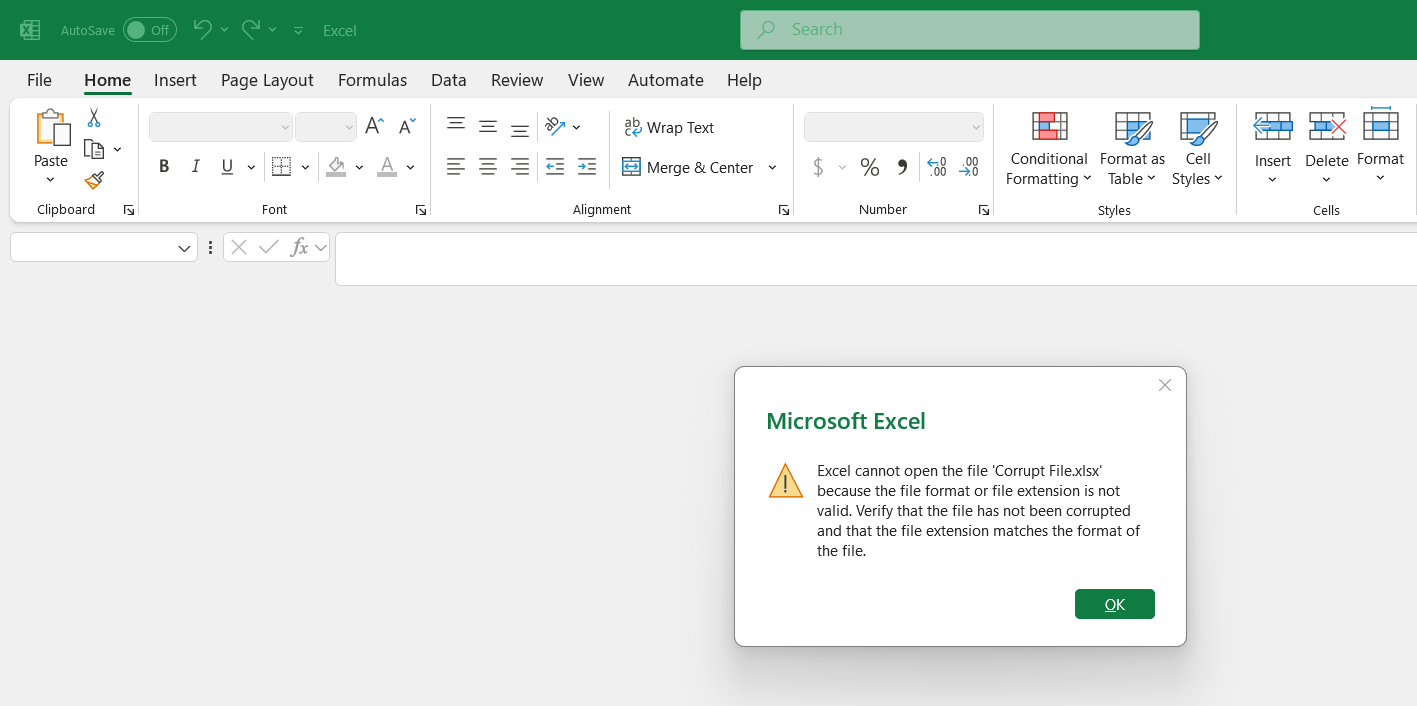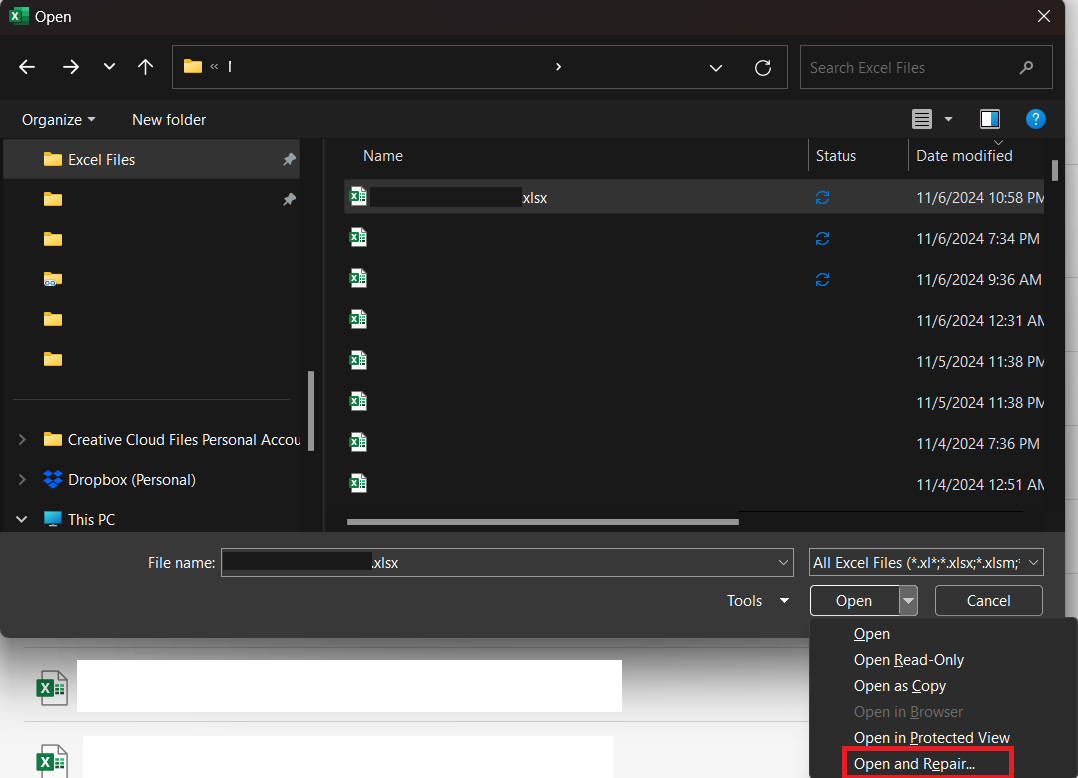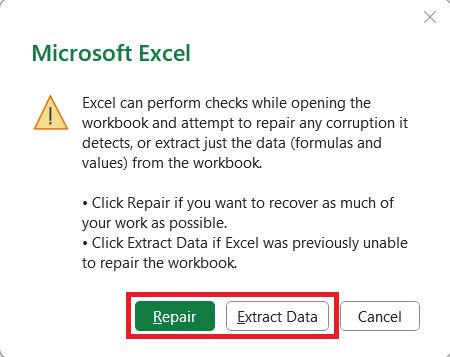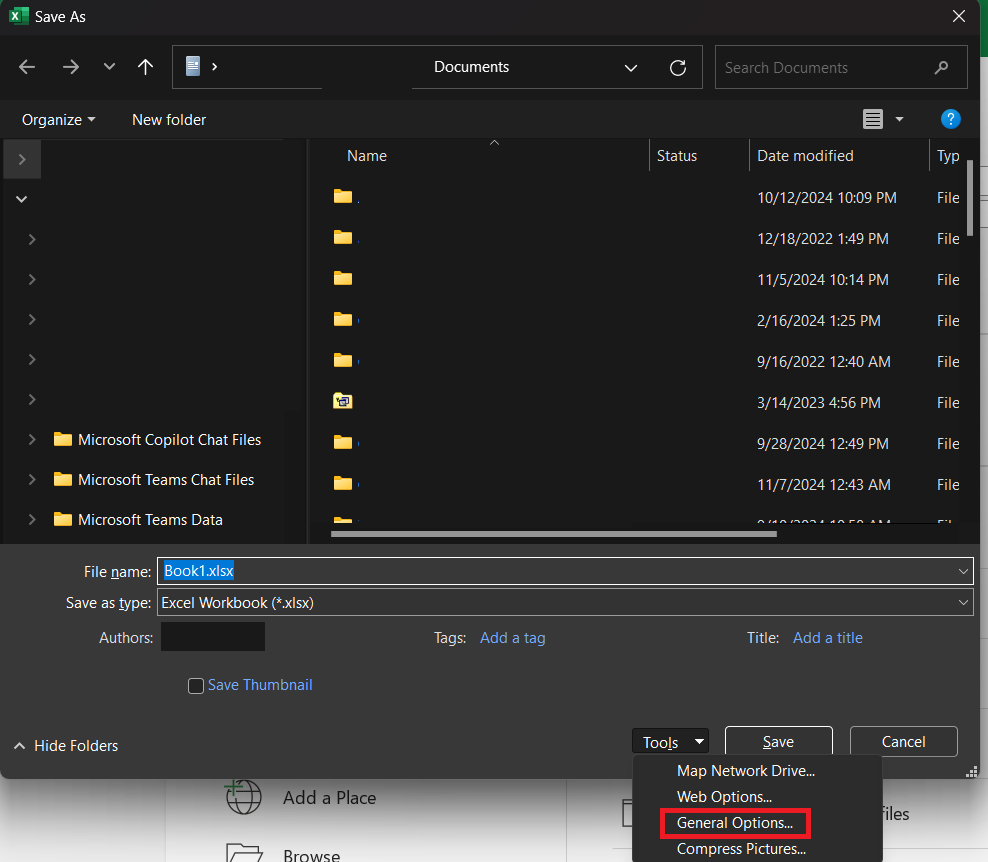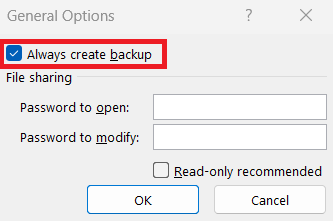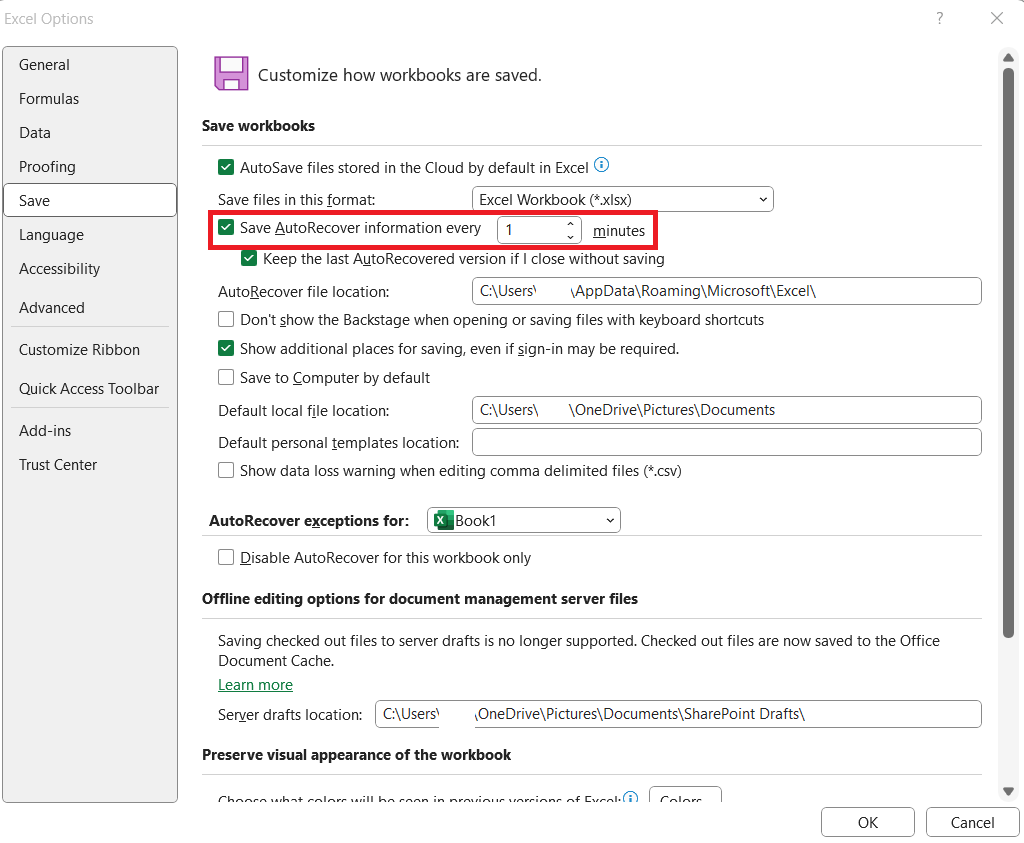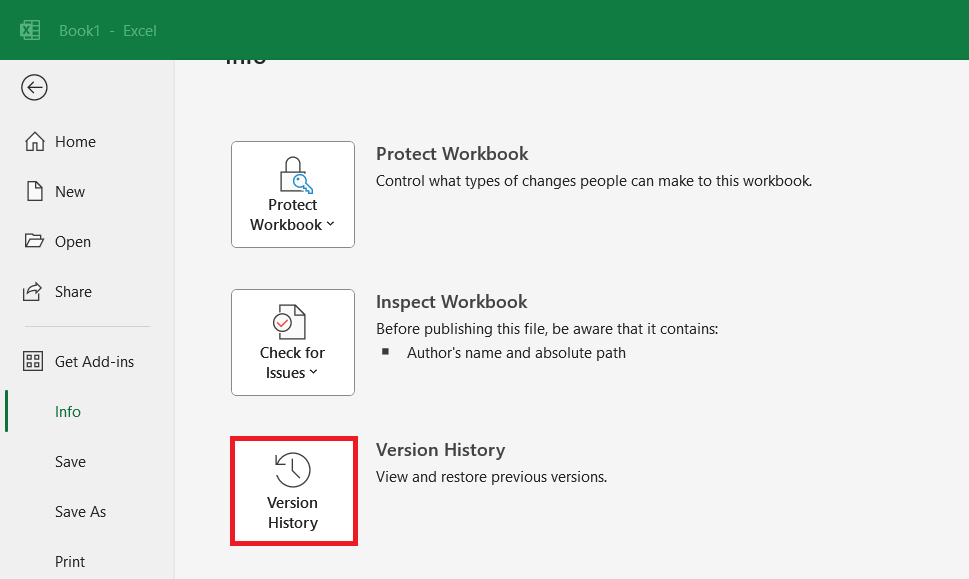If you’ve ever encountered a corrupted Excel file, you know the frustration of losing important data and hours of work. Fortunately, there are ways to repair Excel file, often without needing advanced technical skills. In this guide, I’ll walk you through several tried-and-tested methods for repairing a corrupted Excel file.
Key Takeaways:
- Excel’s built-in “Open and Repair” feature is a great first step to repair Excel file.
- Error messages, unreadable content, or Excel crashes can signal file corruption and the need for immediate repair.
- Setting up automatic backups and AutoRecover can save your work and reduce data loss from unexpected issues.
- For tough cases, using previous versions may help retrieve important data.
- Practicing safe file handling, using trusted add-ins, and regular backups can guard against file damage.
Table of Contents
Introduction to Excel File Repairs
The Woes of Corrupted Excel Files
We’ve all felt the sting of a corrupted Excel file. Imagine toiling for hours on a complex spreadsheet, only to find it won’t open the next day. Not only does this situation halt productivity, but it can also lead to data loss and, in worst-case scenarios, the redoing of an entire project.
Defining Simple Repair Solutions
Thankfully, not all hope is lost when we encounter corrupted Excel files – there exist simple, effective solutions. These solutions range from built-in repair features within Microsoft Excel itself to tackling even the most stubbornly damaged files.
By understanding and utilizing these straightforward repair Excel file options, we can often restore our vital data without the need for complex recovery operations or professional intervention. This empowers us to maintain productivity and safeguards our work against the potential devastation of file corruption.
Recognizing the Signs of a Damaged Excel File
Common Corruption Symptoms
Identifying the symptoms of a corrupted Excel file is crucial for timely recovery. Signs often include error messages upon opening, garbled or unreadable content, unexpected changes in formatting, or the complete inability to open the file. If Excel freezes or crashes when trying to access a particular file, this could also indicate corruption.
These warning signs suggest the file has been compromised in some manner, and proceeding with caution is advised. If these symptoms are present, it’s usually time to consider file recovery steps to prevent further data loss.
When to Consider File Recovery
When encountering any of the aforementioned corruption symptoms, it’s important to consider file recovery immediately. In addition, consider recovery if you’ve experienced a system crash, power outage, or software error while working on an Excel file. These incidents can leave your file in an unstable state, even if the symptoms aren’t immediately evident.
Make file recovery a priority if any sensitive data, critical business information, or time-sensitive projects are at risk. Remember, the sooner you attempt to recover a damaged file, the better your chances of full restoration.
Step-by-Step Guide to Repair Excel File
Using Built-in Excel Features for Repair
We have a reliable ally in combating Excel file corruption in Microsoft Excel’s ‘Open and Repair’ feature. To use it, open Excel, and go to ‘File’ > ‘Open’.
Find the corrupted file, click the arrow next to ‘Open’, and select ‘Open and Repair’.
From there, choosing ‘Repair’ attempts to fix the file, while ‘Extract Data’ can retrieve values and formulas when repair isn’t possible.
This feature is a first line of defense, often capable of resolving minor corruptions and saving our essential data. If it fails, it’s a signal to explore more advanced repair methods.
Saving Your Work: Automatic Backup Options
As a defense against the unexpected, configuring Excel to automatically save backup copies of our workbooks is a lifesaving habit. This can be done by going to ‘File’ > ‘Save As’, clicking on ‘Browse’, and in the ‘Save As’ dialog box, selecting ‘Tools’, then ‘General Options’.
Here, we can check the ‘Always create backup’ box to ensure that a backup file is created with each save.
Additionally, setting up AutoRecover options by going to ‘File’ > ‘Options’, under ‘Save’, enables Excel to save recovery information at intervals we specify.
This feature doesn’t replace regular saving habits, but it’s a fantastic safety net for those unforeseen moments when regular saves might not be enough.
Advanced Techniques for Tougher Cases
Manual Workbook Salvage Operations
When built-in tools fall short, we must roll up our sleeves and delve into manual salvage operations. This might involve locating previous versions of the file using ‘Version History’ or resorting to the use of external drives where backups could be stored.
Another strategy is to open the corrupted workbook with another software that supports .xlsx or .xls files, such as Google Sheets; sometimes these can bypass the corruption. Moreover, manually recovering specific data, such as formulas or formatting, from the XML structure of an Excel file is also possible for those comfortable with advanced troubleshooting.
These hands-on approaches may be time-consuming, but they can be invaluable when you’re looking to retrieve critical information from a corrupted Excel workbook.
Preventing Future Excel Data Loss
Best Practices for File Safety
Adopting best practices for file safety is paramount in guarding against data corruption. It starts with proper file handling; for example, never abruptly shut down your system while an Excel file is open. Instead, ensure you save and close documents properly before turning off your computer.
Another crucial step is regularly scanning your Excel files for malware, especially if they come from external sources. Use trustworthy anti-virus software and conduct periodic scans to detect and remove any threats.
To avoid corruption risks from network vulnerabilities, steer clear of connecting your device to insecure public connections. Likewise, when it comes to add-ins and plugins, only opt for those from trusted publishers.
Remember to avoid forceful actions on your Excel documents, like interrupting file transfers or conversions, as these can create logical errors. Most importantly, make it a habit to maintain backups of critical Excel files, either in a cloud storage solution or an external hard drive – this can be a lifesaver when faced with potential data loss.
Frequently Asked Questions
How do I repair a corrupted Excel file?
To repair a corrupted Excel file, use Excel’s ‘Open and Repair’ feature. Open Excel, click ‘File’ > ‘Open’, locate the corrupted file, click the arrow beside ‘Open’, choose ‘Open and Repair’, and then select either ‘Repair’ to fix the file, or ‘Extract Data’ to retrieve what’s recoverable.
Why do you need to repair Excel file?
Excel needs to repair a file when it detects inconsistencies or errors that prevent the file from functioning correctly. These issues may arise from improper closure of the application, power failures, software conflicts, or virus attacks, leading to corruption that requires repair before normal use can resume.
How can I prevent my Excel files from becoming corrupted?
To prevent Excel files from becoming corrupted, save and close them properly before shutting down your computer, use trusted anti-virus software, avoid connecting to insecure public networks, only install reputable add-ins, and avoid interrupting file processes. Most importantly, create regular backups of your files.
Are there limitations to what Excel repair tools can fix?
Yes, limitations to what Excel repair tools can fix include deeply embedded errors, such as those in Visual Basic for Applications (VBA) code, or corrupted chart elements. Some tools may also struggle to recover password-protected files without the password, or files with extensive structural damage. Always check the tool’s capabilities.
John Michaloudis is a former accountant and finance analyst at General Electric, a Microsoft MVP since 2020, an Amazon #1 bestselling author of 4 Microsoft Excel books and teacher of Microsoft Excel & Office over at his flagship MyExcelOnline Academy Online Course.

